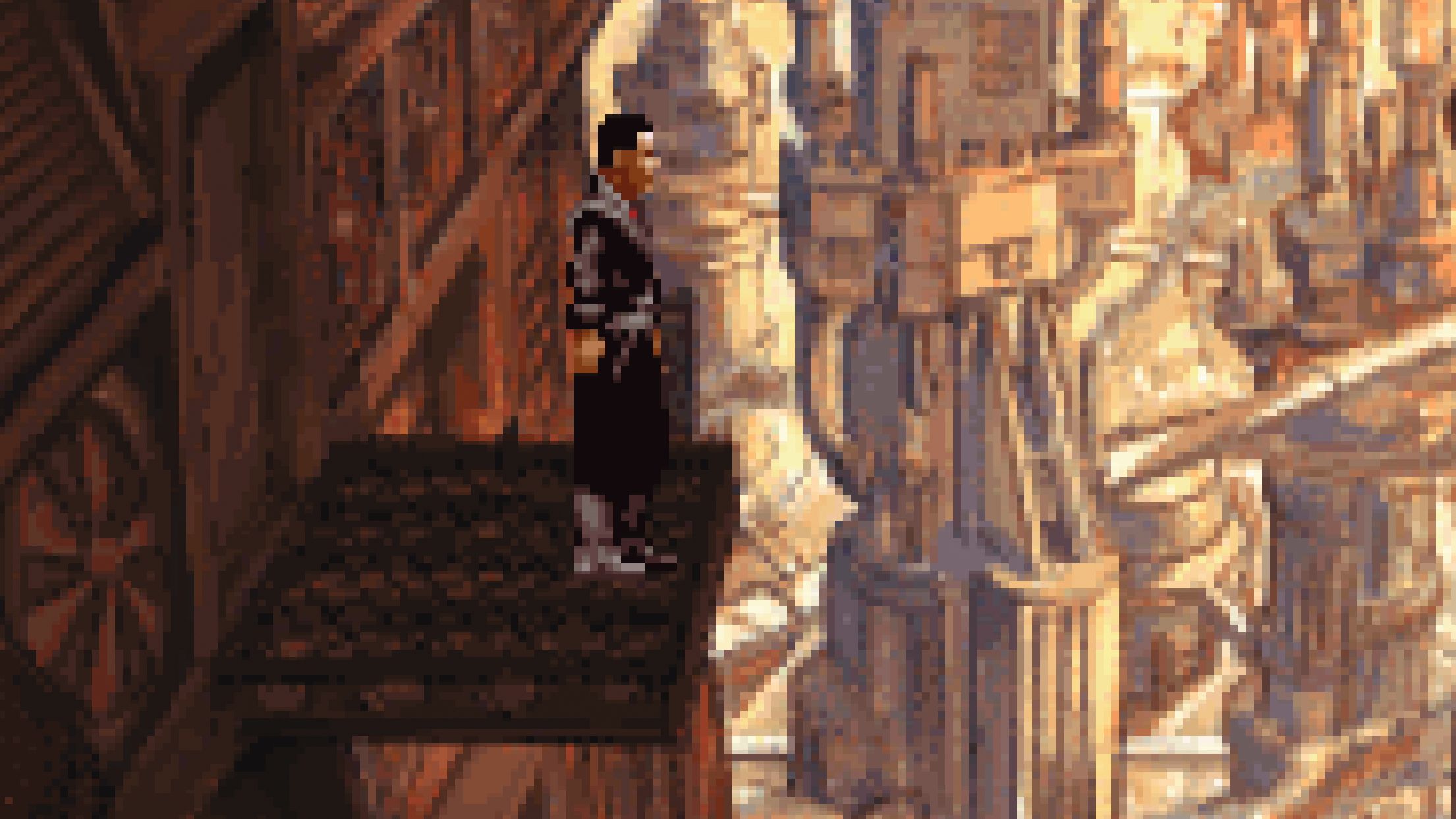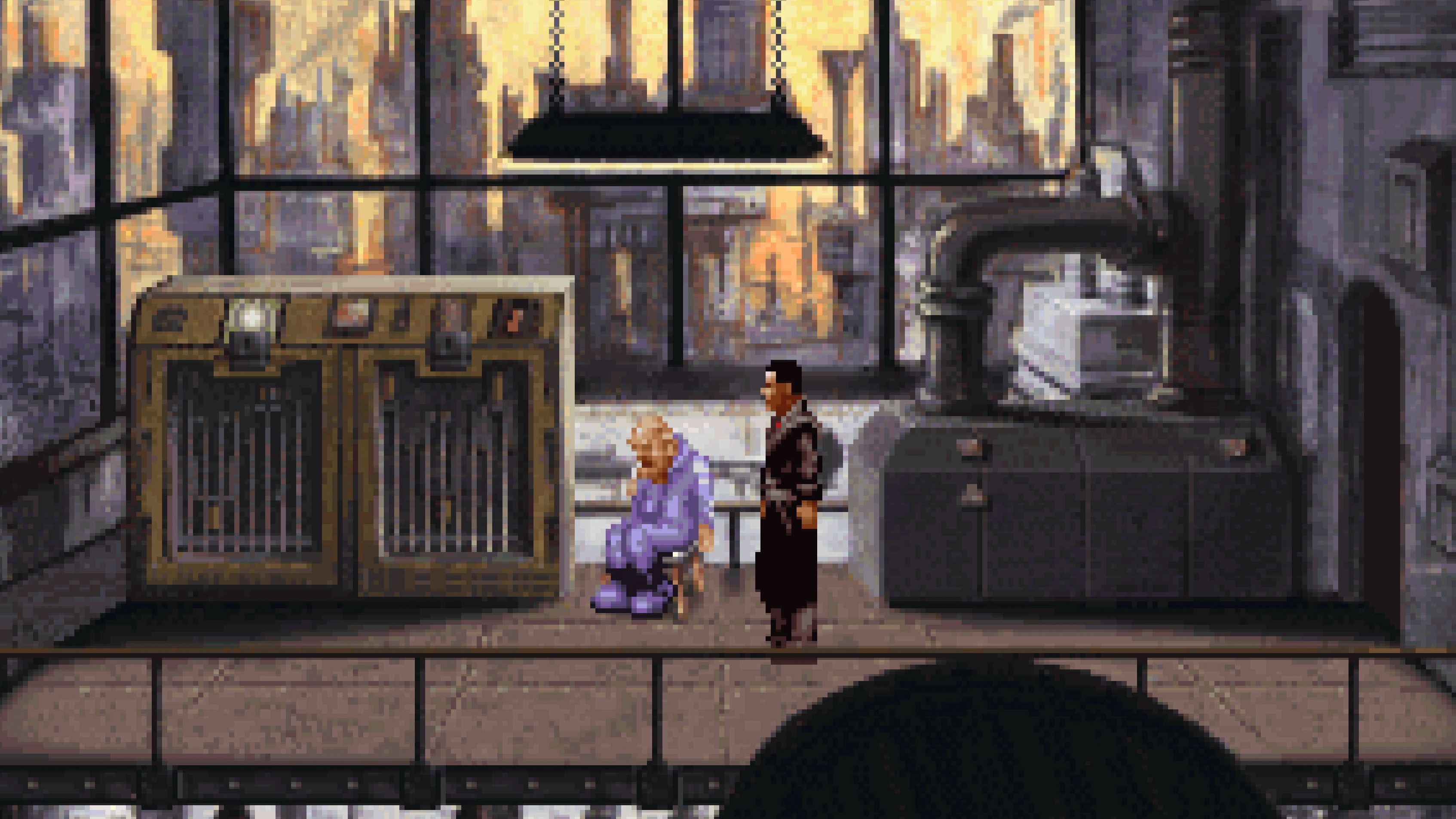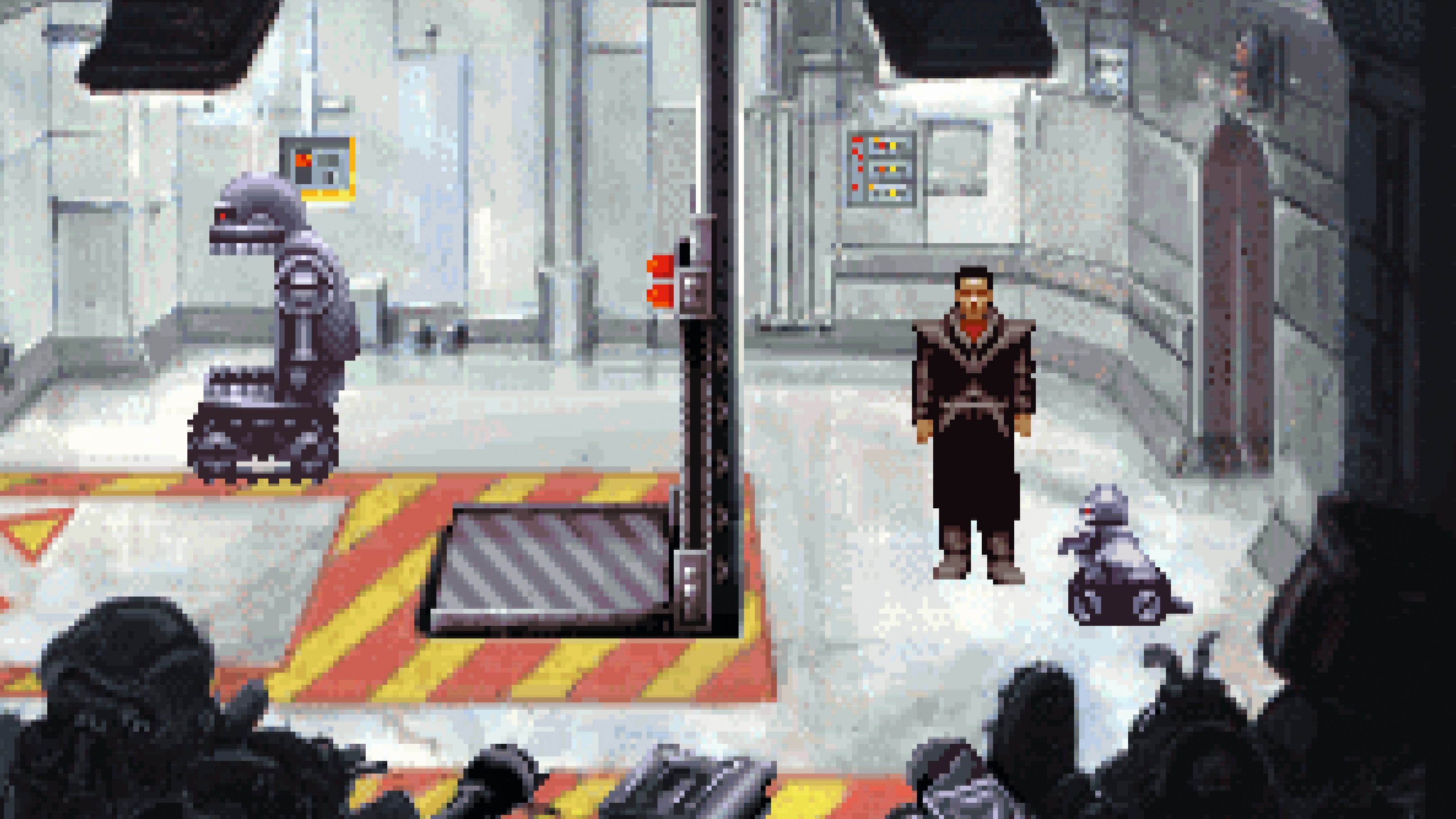Rediscovering the quirky futurism of Beneath a Steel Sky
Before there was a broken sword, there was a steel sky.

Reinstall invites you to join us in revisiting PC gaming days gone by. Today Andy explores the gangways of Beneath a Steel Sky.
After the success of its first adventure game, Lure of the Temptress, UK-based Revolution Software was ready for its next project. An early idea was to develop an adaptation of Alan Moore’s acclaimed comic Watchmen, which led to a meeting between Revolution co-founder Charles Cecil and artist Dave Gibbons. The Watchmen game never came about, but Gibbons and Cecil became friends and decided to work on something original together.
Gibbons wrote a story outline, titled Underworld, which laid the groundwork for what would eventually become Beneath a Steel Sky. Set in Australia in the wake of some unspecified apocalyptic event, it’s the story of a man named Foster trying to escape from a dystopian metropolis called Union City. A helicopter crash left him stranded in the Outback as a boy and he was raised by a group of aboriginals. At the beginning of the game, a jack-booted security force arrives in his village, kills his adopted family, and takes him to the city as a prisoner—and he has no idea why.
With such a dark premise and that evocative title, you’d be forgiven for thinking Beneath a Steel Sky was some kind of earnest, weighty science fiction story. In some respects it is, but mostly it has the peculiar whimsy of a sitcom from the 1970s. Inspired by the success of LucasArts adventure games such as Day of the Tentacle and Monkey Island, Revolution injected the game with a distinctly British sense of humour. And, honestly, it doesn’t really work. The jaunty music, slapstick, and silly jokes jar with the bleak setting, and for a game supposedly set in Australia, most of the people you meet have stereotypical regional English accents. I can’t think of a game with more northerners in it.

Union City reverses the dystopian fiction trope of an urban setting where the poor live in the slums and the wealthy tower above them in luxury. Here the underclasses live and work in the upper levels among factories, while the well-off live in the clean, safe lower levels. Foster tries to reach the bottom level, but finds himself hindered by the city’s rigid social structure. To use the elevators, citizens must achieve a certain status—a way for the totalitarian government in charge to keep the poor and the wealthy segregated. It’s no coincidence that, when the game was being made, Britain was experiencing similar division.
“We were designing a dystopian future,” says Gibbons. “So we looked at how society was in the present day and imagined how it could move forward. Beneath a Steel Sky was made at the height of Thatcherism. A consumer society with divisions that were deeper than ever. And these ideas were floating around in our heads when we created the game.” Cecil adds: “You had the rise of the yuppies, the mega-rich, and the ultra-poor. There was a lot of conflict, and that influenced our setting.”
It’s a politically charged game, informed by the era in which it was made. But they don’t do enough with this aspect of the story, focusing mainly on Foster’s immediate predicament. It feels like a missed opportunity, because dystopian fiction is often a great way to say something meaningful about our own society. True, there are some thoughtful moments in the game that touch on these issues. But in the next moment, you’ll be solving an elaborate puzzle to flip a dog into a swimming pool. The humour almost feels like an afterthought; as if they wrote a serious, straight-faced sci-fi tale, then played Day of the Tentacle and thought “Damn, we better lighten this up with some jokes.”
There was apparently some tension between writers Charles Cecil and Dave Cummins about the tone of the game, which may explain its inconsistency. Cummins wanted the dialogue to be fun and flippant; Cecil wanted it to be more serious. They attempted to compromise and find a middle ground between the humour of LucasArts games and the “ridiculously earnest” Sierra adventures. Actors from the Royal Shakespeare Company were hired to record the dialogue, but the writers were unhappy with the results and re-recorded the entire thing with traditional voice actors. The acting is decent, but the comical tone is, once again, at odds with the setting.
The biggest gaming news, reviews and hardware deals
Keep up to date with the most important stories and the best deals, as picked by the PC Gamer team.

When it came to designing the look of the game, Gibbons started with concept art in his familiar comic book style. He imagined Foster in his original Underworld pitch as “tall, tanned, and craggy, a mixture of Crocodile Dundee and Mad Max.” He sketched out the Nazi-esque uniforms of the security officers and the city’s jumbled, industrial skyline. Then, with only 500 colours and a 320x200 pixel resolution to work with, he began work on the game itself. He used Deluxe Paint II—bitmap graphics software designed by Electronic Arts—to draw the characters pixel by pixel, while the backgrounds were digitised paintings with foreground elements added to give them depth. Finally, a team of animators at Revolution took Gibbons’ sprites and brought them to life. It was a huge undertaking, especially for a small team of only about a dozen people.
Beneath a Steel Sky was developed, according to Cecil, in “a grotty little office above an arcade in the town centre of Hull.” Instead of a network the team would toss floppy disks across the office at each other. The game was built using Revolution’s own Virtual Theatre engine, which would give NPCs rudimentary AI routines. This comes into play when Foster has to talk to a character, obnoxious factory owner Lamb, in a certain part of the city. He walks back and forth between the factory and his apartment, and could be anywhere inbetween. Simple stuff, but impressive at the time.
After the release of Ultima Underworld: The Stygian Abyss in 1992, Gibbons’ original title for the game, Underworld, had to be changed. A list of ideas was shared among the developers, but Beneath a Steel Sky was eventually settled on, which Gibbons wasn’t a fan of at first. The game was released in March 1994 for PC and Amiga and, thanks to marketing support from Virgin Interactive and Gibbons’ involvement, was a commercial success. The critics liked it too, with our own reviewer, Steve Poole, giving it 91% and calling it “well-written” and “challenging but fair.”
Two decades later, Beneath a Steel Sky hasn’t aged as well as some of its adventure gaming peers. It has its charms and some imaginative ideas, but it’s not on the same level as genuine classics like Monkey Island and Day of the Tentacle. It wasn’t until Broken Sword: The Shadow of the Templars (1996) that Revolution made its first truly great game, but Beneath a Steel Sky was an interesting step along the way. A slightly remastered version was released for iOS recently, but you can get the original for free on GOG.com. Time has been slightly cruel to it, but it’s worth experiencing if you’re a fan of Dave Gibbons’ art, or just as a piece of adventure gaming history.
If it’s set in space, Andy will probably write about it. He loves sci-fi, adventure games, taking screenshots, Twin Peaks, weird sims, Alien: Isolation, and anything with a good story.


